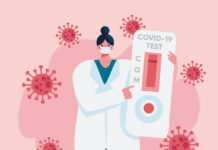Abstract
Autism spectrum disorder (ASD) is a biologically-based neurodevelopmental disorder characterized by impairments in two major domains of development: social communication and social interaction, and restricted, repetitive patterns of behavior, interests, or activities. The severity of symptoms and impairments becomes evident when social demands exceed limited capacities. Over the past decade, there has been a significant increase in media attention, industrial growth, and patient interest in stem cell-based interventions. There is a rise in direct-to-consumer businesses offering stem cell “therapies” for various indications, despite a lack of evidence regarding their safety and efficacy. According to current regulatory guidelines, stem cell treatments, except for approved blood disorders such as hematopoietic disorders, are considered investigational and require approvals from the Central Drugs Standards Control Organization. Thus, using them outside the scope of clinical trials is not permissible. Some centers claim that “stem cell therapy” can “cure” and “treat” autism and promote and recommend its use. However, apart from causing financial strain, this procedure carries a high opportunity cost as it diverts valuable time and resources that could be better invested in evidence-based therapies for autism. Currently, the scientific evidence supporting the use of stem cells for treating ASD is limited. Therefore, it is insufficient to recommend their use in clinical practice. Future efforts should focus on developing standardized methods that generate robust data before considering their application in clinical settings.
Autism spectrum disorder (ASD) is a biologically based neurodevelopmental disorder characterized by impairments in two major domains of development:[1] Social communication and social interaction and restricted,[2] repetitive patterns of behavior, interests, or activities, with severity based on impairments and symptoms presenting when social demands exceed limited capacities. The term includes disorders previously known as autistic disorder (classic autism, early infantile autism, childhood autism, or Kanner’s autism); childhood disintegrative disorder; pervasive developmental disorder-not otherwise specified (PDD NOS), and Asperger disorder (syndrome). The term “spectrum” in ASD indicates that each individual is affected in different ways, with mild to severe symptoms. The manner in which ASD affects a person’s functioning, depends on the severity and combination of symptoms, the presence or absence of associated conditions (e.g., intellectual impairment, language impairment, etc.), and the quality of intervention received. It has a genetic etiology, which alters brain development, affecting social and communication development. Autism is not the presence of a disease but it is the absence of normal social communication milestones.[1]
Most evidence-based treatment models for ASD globally are based on conventional approaches like Applied Behaviour Analysis (ABA), Developmental, and Individual Relationship-Based model (DIRFloortime), Naturalistic developmental behavioral interventions (NDBIs), Learning Experiences and Alternative Programs for Preschoolers and their Parents (LEAP) and Treatment and Education of Autistic and Related Communication Handicapped Children (TEACCH) but have limited outcomes. Currently, there is no global consensus on which intervention is most effective. An intervention needs to be coordinated, documented, and well-planned to give an effective outcome. Management of ASD should target core features of autism, i.e., deficits in social communication and interaction and restricted repetitive patterns of behavior, activities, and interests. A good Autism Intervention Program is based on the child’s chronological age and developmental level, specific strengths and weaknesses, and the goals and needs of the child’s family. Involving the child’s family is of paramount importance in intervention and outcomes.
Stem cell-based therapies are defined as any treatment for a disease or a medical condition that fundamentally involves the use of any type of viable human stem cells including embryonic stem cells (ESCs), patient-derived induced pluripotent stem cells (iPSCs), and adult stem cells for autologous and allogeneic therapies.[2] Stem cells are a solution when there is a need for tissue and organ transplantation through their ability to differentiate into the specific cell types that are required for the repair of diseased tissues.[3] The successful generation of neural cells from stem cells in vitro paved the way for the current stem cell-based clinical trials targeting neurodegenerative diseases. These therapies do not merely target detaining the progression of irrecoverable neuro-degenerative diseases like Parkinson’s, Alzheimer’s, amyotrophic lateral sclerosis, and multiple sclerosis, but are also proposed to completely treat such disorders. The most common FDA-approved stem cell-based therapy is hematopoietic stem cell transplantation, which treats blood cancers like leukemia. The list of conditions treated with stem cells based on peer-reviewed data from sources such as the National Library of Medicine provides an overview of conditions that have been treated with stem cell therapies.[4]
The past few years witnessed an advancement in clinical trials involving stem cell-based therapies. The limitations of these trials for various conditions and ongoing challenges have been reported in the literature. Though there are publications reporting successful cases of stem cell-based therapies, a major number of clinical trials have not yet acquired full regulatory approvals for validation as stem cell therapies.
The last decade has seen a significant increase in media attention, industrial growth, and patient interest in stem cell-based interventions. There is a rise in direct-to-consumer businesses offering stem cell “therapies” for multiple indications with little evidence of safety and efficacy.[5] It has been reported that some centers offer stem cell therapy as a therapeutic approach for autism spectrum disorder. [6,7] This may be a premature step as there is a lack of robust data about clinical efficacy and safety. While the use of stem cells for ASD could be a potentially promising field of research, published studies are not characterized by a high degree of methodological rigor that enables their immediate translational impact. In 2020, a randomized study showed that the use of stem cells can be promising but was not associated with definite significant improvements in social skills or in the reduction of autistic symptoms. For this reason, the authors conclude by emphasizing that more research is needed to determine whether the use of stem cells can be considered an effective treatment for some children with ASD.[8] Such intervention should only be considered if the alternative of no treatment is more dire.[9]
As per current regulatory guidelines, any stem cell treatment, other than its use in treating approved blood disorders such as hematopoietic disorders, is investigational at present and requires approval from the Central Drugs Standards Control Organization (CDSCO) and is not permissible to use outside the purview of clinical trials. Thus, stem cell-based therapy for all other conditions may be considered experimental till conclusive research emerges.
The National Medical Commission (NMC), in its ‘Recommendations of the Committee on Stem Cell Use in ASD’ released in 2022, notes that there is insufficient and inadequate scientific evidence on the efficacy of Stem Cell Therapy in ASD and does not recommend stem cell therapy as a treatment for Autism. They also note the current practice of advertising and offering Stem Cell Therapy for autism commercially as unethical leading to the creation of false hopes, unrealistic expectations, and exploitation of the affected population and their families.[10] The Indian Council of Medical Research (ICMR) in their guidelines released in 2021 does not recommend stem cell therapy as a treatment for Autism and states that it only be offered as part of scientific research/clinical trials. Further, it is firmly stated that such research must follow all existing medical and research protocols of the ICMR and NMC, including: a) Patients undergoing such procedures must not be charged any money or in kind for these procedures. b) The patient undergoing the procedures must be compensated in case of any adverse effects, and c) The patient and his/her caregivers must be made aware of all risks associated with the procedure.[11] The New Drugs and Clinical Trial Rules, 2019, released under the Drugs and Cosmetic Act, 1940 by the Government of India, qualify Stem Cell Therapy as a “new drug” and restrict its administration to clinical trials, implying that stem cell therapy lacks medical certainty and safety that it needs to be established before it is administered outside the confines of a clinical trial.[12]
It is noted that certain centers offer ‘stem cell therapy’ as a ‘cure’ and ‘treatment’ for autism and advertise and recommend it for a fee. It is unclear if parents are comprehensive of the fact that stem cell therapy for autism is still in the research stage and that there are known risks and side effects associated with this procedure. Over and above a relatively high financial cost, this procedure comes with a high opportunity cost as it takes away the precious time and resources, which the parent could have rightly invested in supportive therapies which have been scientifically proven to benefit those with autism.
Conclusion
Currently, the scientific evidence on the use of stem cells for the treatment of ASD is insufficient, and the paucity of evidence on this topic does not allow the use of stem cells in the field of clinical practice as treatment of autism and does not make it immediately translatable to clinical practice. Future directions must involve standardized methods that can provide solid data before suggesting its use in clinical practice.
References
- Dalwai, S. H. IAP Handbook of Developmental and Behavioral Pediatrics. India: Jaypee Brothers Medical Publishers Pvt. Limited. 2021.
- Bobba S, Di Girolamo N, Munsie M, Chen F, Pébay A, Harkin D, Hewitt AW, O’Connor M, McLenachan S, Shadforth AMA, Watson SL. The current state of stem cell therapy for ocular disease. Exp Eye Res. 2018 Dec;177:65-75.
- Aly RM. Current state of stem cell-based therapies: an overview. Stem Cell Investig. 2020 May 15;7:8.
- National Center for Biotechnology Information (NCBI) guidelines
- Asadpour A, Yahaya BH, Bicknell K, Cottrell GS, Widera D. Uncovering the gray zone: mapping the global landscape of direct-to-consumer businesses offering interventions based on secretomes, extracellular vesicles, and exosomes. Stem Cell Res Ther. 2023 May 4;14(1):111.
- Narzisi A. Haste Makes Waste: There Is No Solid Evidence to Translate the Use of Stem Cells into Clinical Practice for Children with Autism Spectrum Disorder. Brain Sci. 2022 Jul 27;12(8):992.
- Siniscalco D, Kannan S, Semprún-Hernández N, Eshraghi AA, Brigida AL, Antonucci N. Stem cell therapy in autism: recent insights. Stem Cells Cloning. 2018 Oct 23;11:55-67.
- Dawson G, Sun JM, Baker J, Carpenter K, Compton S, Deaver M, Franz L, Heilbron N, Herold B, Horrigan J, Howard J, Kosinski A, Major S, Murias M, Page K, Prasad VK, Sabatos-DeVito M, Sanfilippo F, Sikich L, Simmons R, Song A, Vermeer S, Waters-Pick B, Troy J, Kurtzberg J. A Phase II Randomized Clinical Trial of the Safety and Efficacy of Intravenous Umbilical Cord Blood Infusion for Treatment of Children with Autism Spectrum Disorder. J Pediatr. 2020 Jul;222:164-173.e5.
- Finlay-Morreale H. Invasive therapy for children with autism is not justified. Stem Cells Transl Med. 2021 Jun;10(6):826.
- Recommendations of the Committee on Stem Cell Use in ASD – 2022, National Medical Commission
- Evidence Based Status of Stem Cell Therapy for Human Diseases – 2021, Indian Council of Medical Research
- New Drugs and Clinical Trial Rules, 2019


























